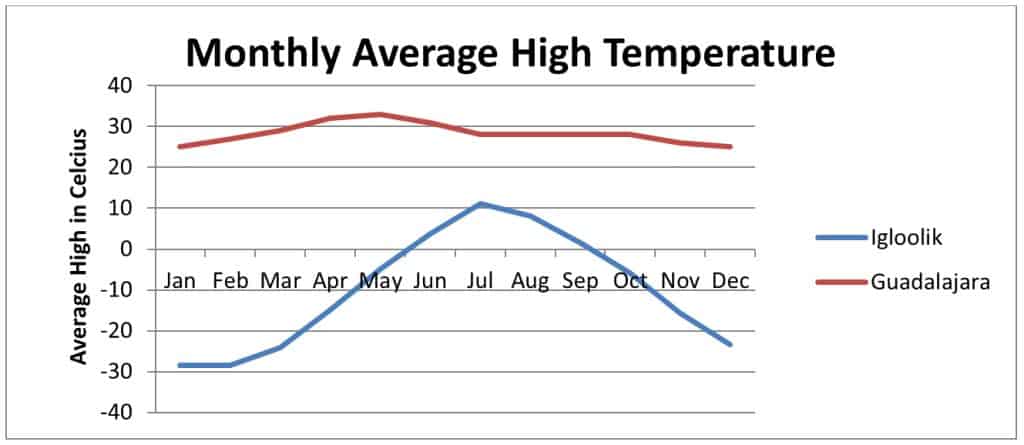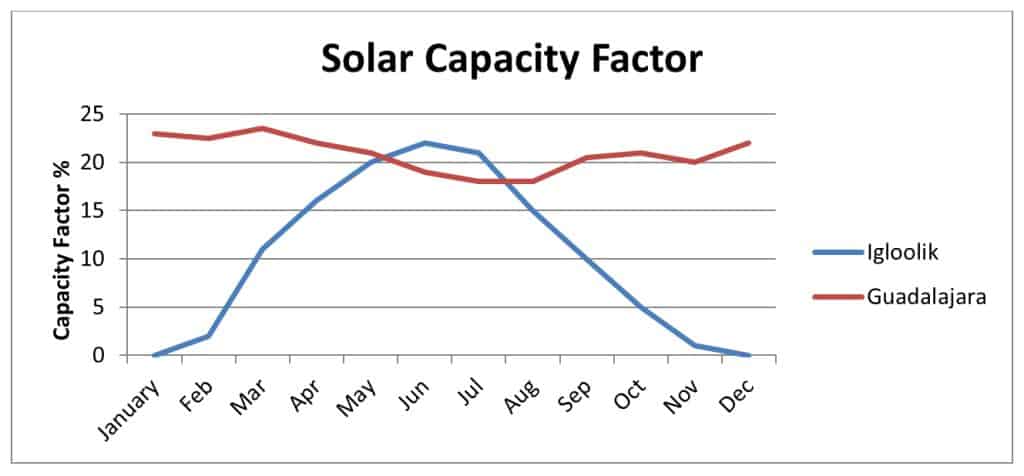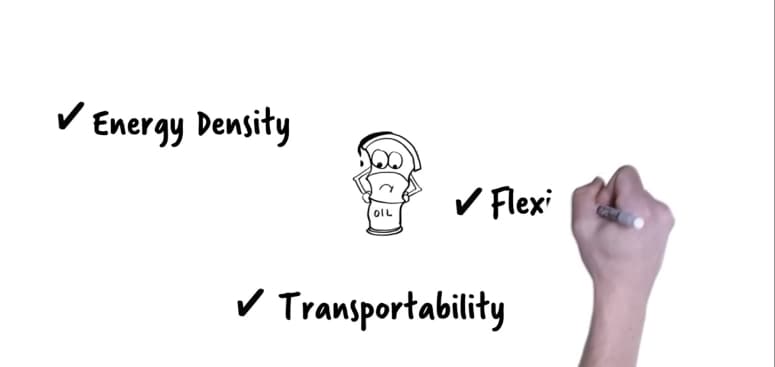Given the readily apparent consequences of dramatic climate change and the approaching limits of the planets resources, the great majority of Canadians recognize the need for change. However, our efforts to date indicate we believe a sustainable society is our current society spray painted green. It is unlikely Mother Nature will support this business-as-usual model.
A change from a consumer society to a sustainable, conserver society must focus on the welfare of the planet and future generations through balance rather than maximizing exploitation. This takes further growth off the table as an option both for per capita consumption and population. So far, our muddled and tepid response makes clear we have not developed a vision of what a sustainable society looks like. Below are a few practical parameters which will heavily influence what a sustainable society actually looks like.
In order for a society to remain sustainable, it must be:
- Energetically Sustainable
- Resource sustainable
- Environmentally sustainable
- Fiscally sustainable
- Socially sustainable
Necessary Awareness
Canada needs to be aware of its own specific biophysical realities, the energy demands of its northern climate and the limitations of our renewable energy resources.
- Canada is a large country with large but widely dispersed energy flows.
- Niagara Falls is likely the country’s lowest cost energy producer and it provides approximately the same energy output as does a 4 generator (880 megaWatt each) Candu nuclear power plant (example: Pickering Nuclear) from a collection area of 700,000 sq km.
Life in Canada requires high energy consumption
The rules which apply to more southern regions where there is little or no requirement for seasonal energy storage simply do not apply to Canada.
- In Canada, renewable energy generation decreases dramatically in the winter while demand for energy increases dramatically.
Current population and consumption levels have been enabled by abundant fossil fuels and their inherent storage capability. Renewable energy will not sustain this level of energy consumption or convenience.
The graphs below ** illustrate why Canada and every country must develop sustainability strategies which fit their own unique set of circumstances. For instance, Guadalajara, Mexico has several immense advantages compared to Igloolik, Canada. The first is high and consistent temperatures year round which eliminate the need for any heating demand. The second is the high capacity factor of solar PV systems at this southern 21 degree latitude. PV systems at this latitude produce roughly the same output all year round.
Contrast this to Igloolik, at its 69 degree latitude, 3 degrees north of the Arctic Circle. Homes in Igloolik require heating throughout the year. For over 6 months of the year, energy output from solar panels would be near zero. Wind is the only option in this region. In addition, in an all-electric renewable energy system, a great amount of battery storage would be required to maintain necessary heating. At today’s pricing, with todays technology, this would amount to millions of dollars per residence. Clearly this is not viable. We have grown accustomed to, and depend on, the inherent storage capability of fossil fuels but the world of electricity has no such capability built into it.


This reality of high demand for energy and low availability of energy for many months of the year, so apparent for Igloolik, holds true for every region in Canada, although mostly to lesser degrees. Clearly the much higher population densities of more southern nations may well be sustainable whereas in Canada and other northern nations, such densities are nowhere remotely possible even with extremely high levels of technology and large-scale infrastructure investment. This energy demand/energy availability crunch permeates every aspect of production, transport and personal activity in the country.
Canada does have large per capita hydro electric capacity, critical for supporting the variable output of renewable energy systems. But there is still not enough capacity to assure todays levels of electricity service levels in a 100% renewable energy supplied grid. A Canadian population of 20 million might present an energy demand that could be reliably met with the country’s renewable energy flows.
In any case, the renewable energy infrastructure will have to be scaled up to the order of 100,000 2 megaWatt wind turbines and close to a billion solar PV and hot water panels plus grid upgrades in addition to extremely aggressive conservation and efficiency investments. Although we need in-depth energy modeling to better estimate the scale of renewable energy infrastructure required, it is clear that an aggressive start needs to begin immediately.
Where We End Up
Physically, a sustainable society has the following features:
- electrified ground transport, widely available public transport with car sharing services and reduced car ownership
- All-electric power systems, all power comes to the end user down a wire.
- Goods and structures are built to last and be upgradable
- Disposable goods are almost non-existent
- Recycling is extremely effective
- District heating is widespread with energy harvesting, storage and distribution handled in flexible local grids.
- Most goods are nationally produced by the broad based economy.
- International trade consists mostly of information and critical goods/commodities.
- Population is stable or declining moderately.
- A high proportion of senior citizens is inherent with a stable population.
- More compact urban areas with rural areas used for food production and natural regeneration.
- Residential and commercial buildings upgraded to harvest and store energy flows.
Early Actions
Electrification and conservation are central to a renewable energy society as is the ability of all buildings to harvest energy. Any new buildings need to be designed from the outset to accommodate energy harvesting. Existing stocks need to be upgraded. Communities need to be designed for compactness and ease of active (walking, biking) and light rail transportation. Energy consciousness, in terms of conservation, generation and efficiency, needs to be baked into every private and public infrastructure decision.
It should be kept in mind that renewables means conversion to electric energy which is much more efficient than fossil fuels but currently will not perform all of the tasks that fossil fuels do. Fossil fuels are themselves stored energy and they have allowed us to ignore the critical issue of seasonal storage in Canada. There is no current means of storing sufficient electrical energy on a seasonal basis to provide heat during the winter in Canada. Renewables have lower EROIs (Energy Return on Energy Investment) than does our current menu of fossil fuels and hence real energy costs will increase as we convert to electrification.Final end costs can be reduced through conservation and efficiency improvements driven by technological progress.
Lowest hanging fruit – highest return for lowest cost
- Electrify cars and ground transport ASAP.
- Scale back oil sands as it is very low net energy, high emissions, extreme legacy costs and a net money loser for taxpayers.
- Note that conventional oil and natural gas are likely net money makers for Canadian taxpayers.
- Strategize future investment. No eastern pipeline needed as ground transportation will be converted to electric within 30 years.
- Conservation across all sectors – it is cheaper to save energy and material than it is to produce them.
- Streamline regulatory processes to encourage district heating/electrical grids and micro-grid initiatives.
- Optimize surfaces of buildings for energy harvesting.
- Abandon the pursuit of endless growth, the developer and financial institution economic paradigm of “populating the north” and “filling the country up” etc.
Process: How do we get there?
A socially cohesive nation maintains an open national conversation to deal with national issues. It is, in effect, a nation talking to itself. This conversation allows information to be absorbed and processed. Better information will reduce the polarization which, to this point in Canada, has caused people to retreat into philosophical factions demanding ideological purity rather than developing a common basis for understanding of the real problems and possibilities.
The retreat from science and technical competence has left the country functionally moribund with respect to national goals and strategy and has brought progressive government to a halt. Witness the sensationalist, irresponsible and destructive journalism and political opportunism of the Ontario Green Energy debacle. We need to start speaking to each other again and the power elites need to begin listening.
Coherent and coordinated policy connects the dots of cause and effect and works with a full set of biophysical numbers, and open and accessible models for examination by experts, policy makers, activists and citizens. It addresses the realities of our dynamic planet and environment and values resilience, the ability to absorb shocks and change, over maximizing short term output.
Forward looking and generationally responsible discussions look as far ahead as the science of individual resources and disciplines will allow. Generational responsibility means one generation lays the groundwork for the next rather than eating its future. The Japanese saying of “son gets the better ricefield” epitomizes this ethic. Socially, this will be extremely challenging with great stresses placed on social cohesion. Witness the dismantling of Ontario’s Green Energy policy fiasco and the French gillets jaunes protests. The sooner we begin in earnest, the easier and more gradual the transition will be.
The national conversation and decision making process must recognize the specific capabilities and limits of the commercial marketplace as a subset of our biophysical and social world. National decisions should be based on biophysical metrics representing the real wealth creation process rather than on the money metrics of debt, transfers and asset inflation.
Instead of looking at the society as a market and the individual as a consumer, a sustainable society bases its goals on human well-being and the health of its environmental assets. A sustainable society understands its relationship with:
- Energy
- Scarcity – resource capacity
- Efficiency
- Fiscal balance
- Generational Transfer and Time
Governments can’t pick business winners but they must pick directions and always have their fundamental priorities and technical realities clearly in mind when formulating policy. These factors should be baked into policy making at all levels.
- Efficiency
- Most efficient means of transport is rail, biking, walking
- Most efficient motor is electric
- Most efficient lifecycle is hydroelectric
- Most viable heat storage is geothermal
- Most efficient heating systems are geothermal and solar
- Resource Management
- Conserve resources, maintain assets, harvest the surplus
- Let nature do the work
- Human welfare – intentional collateral benefits of a sustainable society
- Healthy environment
- Productive and well paid jobs
- Access to nature
- Efficient transport
- Leisure time
- Healthy food
- Built in exercise to daily life
- Fiscal balance
Power in our growth fixated society is largely wielded by developers, resource exploiters, finance institutions and media corporations, all of whom are very dependent on the growth of the commercial marketplace. The transition to renewable energy and the conservation of resources plus the focus on creating high quality jobs makes no economic sense for this group. In fact, in a sustainable society, a large part of these industries will disappear.
A transition to a sustainable society needs to see a shift of leadership back to the producers of sustainable real wealth consisting of localized producers of goods, food, transport and energy along with the essential services of health and education. These sectors can prosper forever with no growth required. Future leaders need to come from leading sectors rather than from the remnants of the fossil fuel and colonization era.
Energetic Equality
Change is disruptive and the transition to renewable energy and a sustainable society will impose huge shifts throughout our society. To maintain social stability, high levels of energetic and economic equality are vital. A northern nation with high energy demand requires low income groups to spend proportionately more of their incomes on energy. It is critical that conservation and efficiency incentives go disproportionately to those low income groups. The full cost of the energy must be paid by the consumer to maintain rational consumption decisions but incentives must be put in place to assure the rich/poor energy gap does not stretch social cohesion past the point of breakdown.
Technology, Investment and Markets
Policies must be designed to subsidize leading investments and technology to ease the change from fossil fuel and wasteful consumption to renewables and conservation and higher efficiency. But market prices of commodities must always reflect real and full costs to avoid subsidizing consumption.
The fossil fuel era, with its cheap, abundant stored energy, allowed a complete decoupling of human society and natural energy flows to take place. In the post-carbon era, individuals and society will once again be conscious of natural systems and “Making hay while the sun shines” will very much be a modus operandi of daily life. We will have to develop the social and lifestyle technology of sustainability.
The climate and fossil fuel timeframes which confront us mean that a transition to renewable energy is inevitable within the next 2 generations whether by our hand or nature’s. How we arrive at the point at which fossil fuels are largely absent from the economy is a matter of societal choice.
If Canada is to be prosperous and sustainable it must abandon the pursuit of endless growth whether through mass immigration or increased consumption and commit to investing in its people and conserving its natural resources for future generations. The economic model of selling off natural assets and building energetic and environmental overhead through population growth has to transition to one of producing what we consume, maximizing our human potential and minimizing both our collective and individual footprint on the natural world.
Sustainability isn’t a destination point or endgame at which we have to arrive by a certain time, it is a path that will take various directions over time. In the end, a sustainable Canada will have transformed into an egalitarian, learning society with a highly educated, stable population in balance with its environment and capable of withstanding the shocks our dynamic planet is certain to produce.
** much of the information above has been derived from the November, 2019 book “The Renewable Energy Transition, Realities for Canada and the World” by John Erik Meyer, published by Springer Nature.


